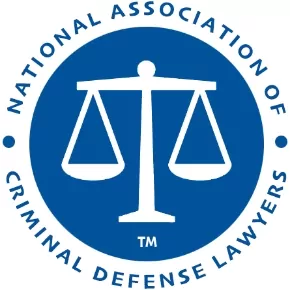Bulk Cash Seizures for Forfeiture
If you carry $10,000 or more in bulk cash into or out of the United States, you must filed a FinCEN105 Form. If you fail to make the proper report, the U.S. Currency might be seized for one of the following violations:
- 31 United States Code (“U.S.C.”) §§ 5332(a), (c) – Concealed Bulk Cash/Importation;
- 31 U.S.C. §§ 5317(c)(2), 5316(a)(1)(B) – Failure/Inaccurate Report of Over $10,000 into the United States; or
- 31 U.S.C. §§ 5317(c)(2), 5316(a)(1)(A) – Facilitating Failure/Inaccurate Report of Over $10,000 into the United States.
When determining whether the bulk cash was related to other illegal activities, the court might determine whether the following factors were present:
- carrying a substantial or large amount of cash;
- a drug dog alerted to the defendant currency;
- the Claimant made inconsistent statements about the source of the cash or its intended purpose;
- the Claimant’s statements describe events that seem implausible; or
- the Claimant appeared to be extremely nervous.
Seizures of bulk cash are common at international airports and other ports of entry into the United States. In most cases, the seizure occurs right before a person gets on the international flight or right after they get off the flight. The person seizing the property is an agent with Customs and Border Protection (CBP) or sometimes an agent with Homeland Security Investigations (HSI).
Attorney for Bulk Cash Forfeitures
If you failed to declare bringing more than $10,000 into or out of the United States or bulk cash smuggling, you might be accused of a violation of 31 U.S.C. §§ 5317(c)(2) and 5316(a)(1)(B). Seek out the services of an experienced civil asset forfeiture in the United States who can help you file a claim for court action.
Under 31 U.S.C. § 5316, a violation occurs when a person knowingly transporting currency of more than $10,000 at one time to a place in the United States from a place outside the United States shall file a report with CBP at the time of arrival. See also 31 C.F.R. § 1010.340(a). Failure to do so subjects that currency to seizure and forfeiture to the United States. 31 U.S.C. § 5317(c)(2).
An attorney can help you show, that based on the totality of evidence, there is not a nexus of the seized currency to illegal activity and the currency or monetary instruments have a legitimate source and legitimate intended use.
During your initial consultation, we can explain why petitions for remission or mitigation rarely result in any relief. The only way to contest the validity of the initial seizure is to demand court action.
Call 813-250-0500.
Statutes Allowing for the Seizures of Currency for Report Violations
Monetary instruments transported in violation of 31 U.S.C. § 5316 or 31 U.S.C. § 5324 may be seized and forfeited in accordance with 31 U.S.C. § 5317(c).
The applicable provisions of 31 U.S.C. § 5316 require that every person who knowingly transports or attempts to transport monetary instruments in an amount exceeding $10,000 into or out of the United States on any one occasion file a report with CBP at the time of arrival or departure. 31 U.S.C. § 5316; see also 31 C.F.R. § 1010.340(a).
The applicable provisions of 31 U.S.C. § 5324 prohibit anyone from intentionally structuring a transaction in amounts less than $10,000 specifically to evade certain requirements of the Bank Secrecy Act, including the reporting requirements of 31 U.S.C. § 5316.
Any instrument transported or attempted to be transported that is traceable to a violation of 31 U.S.C. § 5316 or 31 U.S.C. § 5324 is subject to seizure and forfeiture to the United States. 31 U.S.C. § 5317(c)(2).
All monetary instruments involved in a violation of the Currency or Monetary Instrument Report (“CMIR”) reporting requirement in the Bank Secrecy Act, codified at §§ 31 U.S.C. 5316, 5317, and 5324 are subject to seizure and forfeiture, even if a portion is reported. See CBP Mitigation Guidelines, Informed Compliance Publications: Currency2 at 48 (Feb. 2020).
Further, CBP is empowered to deny relief and initiate administrative forfeiture proceedings on the seized funds if:
- the totality of evidence available to Customs establishes a nexus to illegal activity; or
- the petitioner fails to establish that the monetary instruments have a legitimate source and intended use.
Excessive Fine Under the Eighth Amendment
What happens if the district court decides to forfeit U.S. Currency for failure to report the currency when crossing the United States border in violation of 31 U.S.C. § 5316, see 31 U.S.C. § 5317(c), and for bulk cash smuggling, id. § 5332?
Congress enacted 31 U.S.C. § 5332, which prohibits the act of bulk cash smuggling. The courts have found that a violation of § 5332, when connected with illegal activity, constitutes a serious crime that inflicts significant harm. See United States v. Del Toro-Barboza, 673 F.3d 1136, 1154 (9th Cir. 2012).
For an international flights into or out of the United States, if you carry $10,000 or more in U.S. Currency and fail to report the cash on a customs declaration form, it can be seized for forfeiture under 31 U.S.C. §§ 5316, 5317, and 5332. The claimant can contest the seizure and move to mitigate the forfeiture amount pursuant to the Eighth Amendment’s bar on excessive fines. The excessive fines defense is decided under the totality of the circumstances. In a civil forfeiture action, the government bears the burden of proving by a preponderance of the evidence that the property is subject to forfeiture.
For the defense that the forfeiture violates the Eighth Amendment’s bar on excessive fines, the Claimant bears the burden of establishing that the forfeiture is grossly disproportional by a preponderance of the evidence under 18 U.S.C. § 983(g)(3). The court will consider four factors in weighing the gravity of the defendant’s offense:
- the nature and extent of the crime;
- whether the violation was related to other illegal activities;
- the other penalties that may be imposed for the violation;
- the extent of the harm caused.
In United States v. Bajakajian, 524 U.S. 321, 337, 118 S. Ct. 2028, 141 L. Ed. 2d 314 (1998), the court found that a violation of 31 U.S.C. § 5316 is “solely a reporting offense” and does not constitute a serious crime under the Excessive Fines Clause. On the other hand, § 5332 criminalizes the act of bulk cash smuggling into or out of the United States. For this reason, the courts reason that transporting more than $10,000 of unreported currency across the border in violation of § 5332 is more than a reporting offense.
The legislative findings for § 5332 provide that the “intentional transportation into or out of the United States of large amounts of currency or monetary instruments, in a manner designed to circumvent the mandatory reporting provisions . . . is the equivalent of, and creates the same harm as, the smuggling of goods.” USA Patriot Act, Pub. L. No. 107-56, § 371(a)(4), 115 Stat. 272, 337 (emphasis added). Enforcement of § 5332 effectively combats these various types of serious criminal activity. Id. § 371(a)(5).Additionally, Congress determined that “the movement of large sums of cash is one of the most reliable warning signs of drug trafficking, terrorism, money laundering, racketeering, tax evasion and similar crimes.” Id. § 371(a)(3).
Legislative intent can also be found in § 5332, which included the need “to emphasize the seriousness of the act of bulk cash smuggling.” Id. § 371(b)(3). By enacting § 5332, Congress highlighted that it intended to criminalize the act of bulk cash smuggling reasoning:
The current penalties for violations of the currency reporting requirements are insufficient to provide a deterrent to the laundering of criminal proceeds. In particular, in cases where the only criminal violation under current law is a reporting offense, the law does not adequately provide for the confiscation of smuggled currency. In contrast, if the smuggling of bulk cash were itself an offense, the cash could be confiscated as the corpus delicti of the smuggling offense.
USA Patriot Act, Pub. L. No. 107-56, § 371(a)(6), 115 Stat. 272, 337.
This article was last updated on Thursday, November 6, 2025.







